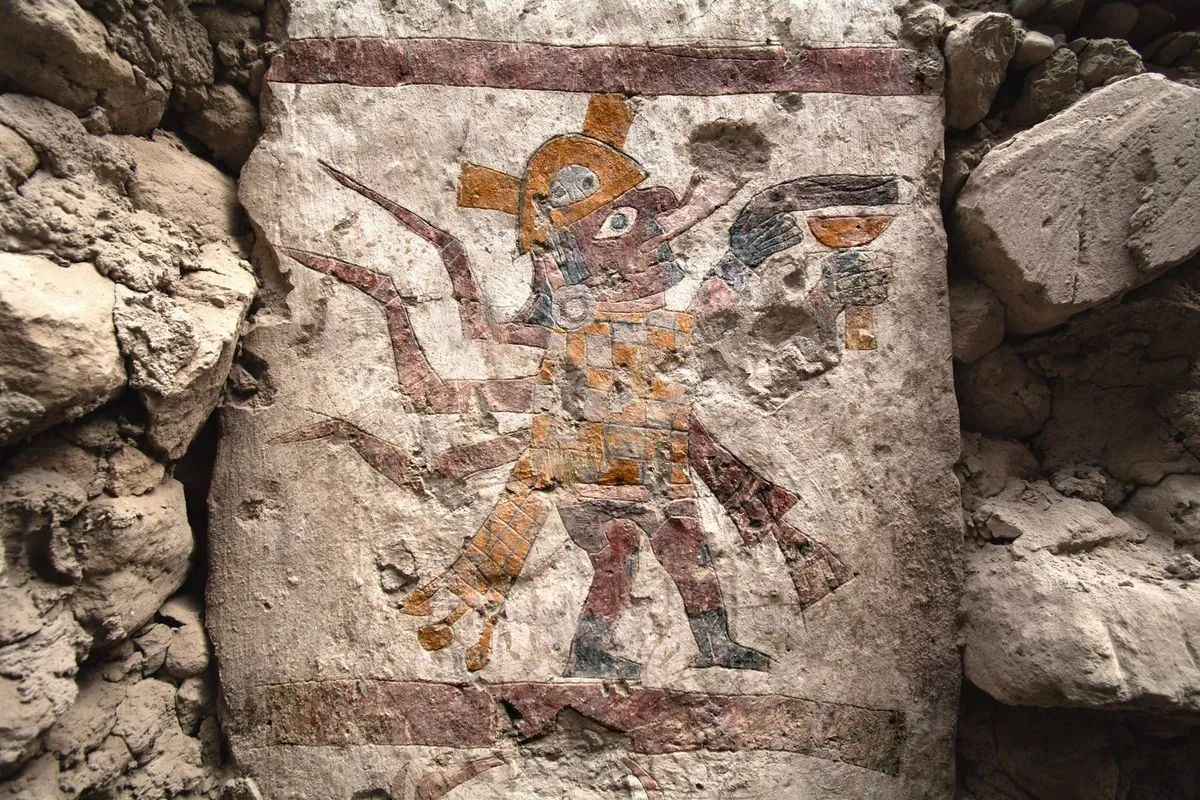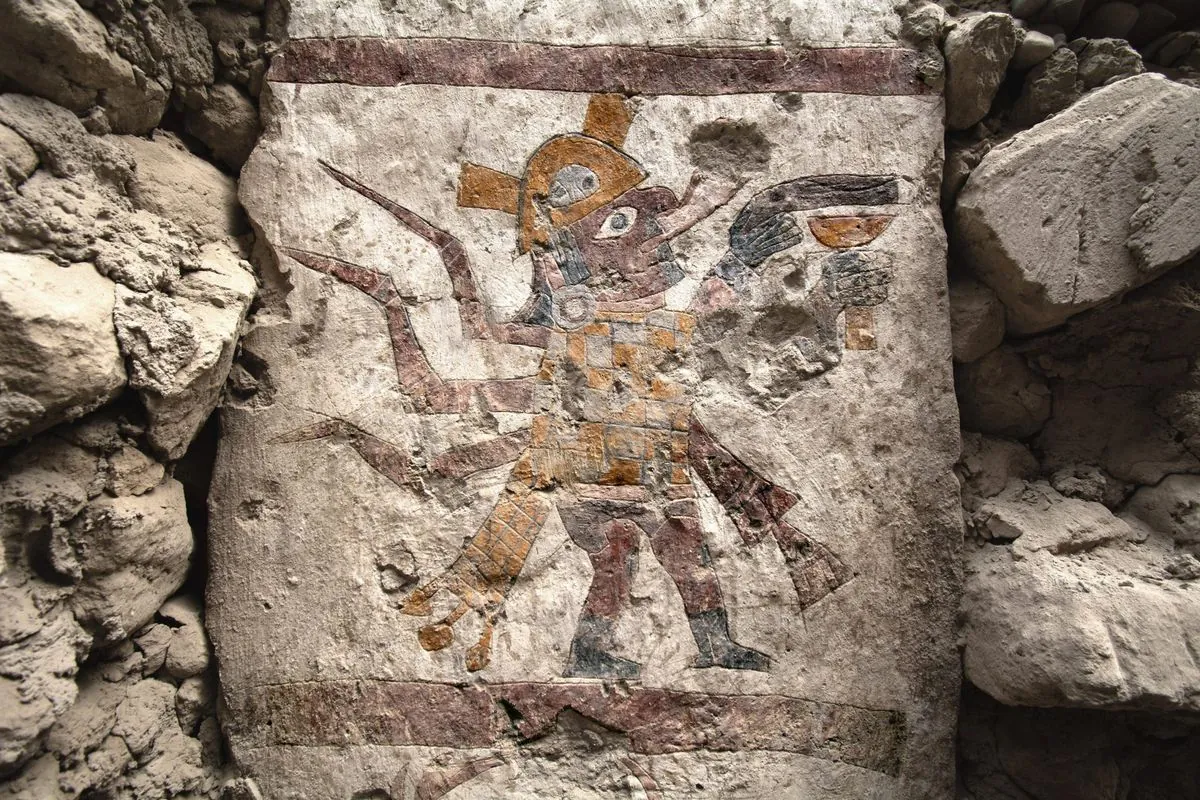Ancient Peruvian Throne Room Hints at Female Moche Ruler
Archaeologists in Peru uncover evidence of a possible female ruler from the Moche culture, including a stone throne and elaborate murals. The 1,300-year-old site reveals unique iconography and insights into pre-Hispanic Peru.

Archaeologists in Peru have made a groundbreaking discovery that could reshape our understanding of ancient Moche society. At the Panamarca site on Peru's northwest coast, researchers have unearthed evidence suggesting the presence of a female ruler over 1,300 years ago.
The Moche culture, which flourished in northern Peru from about 100 to 700 AD, was known for its complex social structure and impressive artistic achievements. This latest find adds a new dimension to our knowledge of Moche governance and gender roles.
At the heart of the discovery is a stone throne room adorned with intricate murals. Jessica Ortiz, the research director for the project, noted that the nature of these ancient paintings "could indicate it was a woman who used the space, possibly a ruler." The murals depict a powerful female figure interacting with sea creatures and celestial symbols, seated on a throne and receiving visitors.

The throne itself bears signs of use, with archaeologist Jose Ochatoma emphasizing the significance of wear marks on the stone surface. This physical evidence supports the theory that the throne was indeed used by an individual of importance, potentially a female leader.
Moche society was highly stratified, with a powerful elite class at its apex. The discovery of a possible female ruler adds nuance to our understanding of Moche power structures and challenges previous assumptions about gender roles in pre-Columbian Andean civilizations.
The intricacy and preservation of the murals have led Ochatoma to draw comparisons with the Vatican's Sistine Chapel. He describes the Panamarca throne room as "a place where they captured scenes belonging to the Moche ideology." This comparison underscores the cultural and artistic significance of the site.
"There is not a surface in this area that is bare. Everything is painted and finely decorated with mythological scenes and characters."
Adjacent to the throne room, researchers uncovered another chamber they've dubbed the Chamber of the Braided Serpents. This room features a unique mural depicting a figure with legs intertwined with snakes, a motif previously unseen in pre-Hispanic art. The chamber also contains murals showing warriors, anthropomorphized weapons, and mythological scenes.
The Moche were skilled artisans, known for their elaborate metalwork, pottery, and textiles. Their art often depicted complex scenes of warfare, ritual combat, and religious ceremonies. The newly discovered murals at Panamarca add to this rich artistic legacy, providing fresh insights into Moche iconography and beliefs.
Located more than 400 km north of Lima, the Panamarca site is part of Peru's vast archaeological heritage. The Andean nation boasts numerous ancient sites, many predating the Inca Empire by centuries. The Moche civilization, which collapsed around 800 AD, possibly due to environmental factors, left behind a wealth of cultural and architectural treasures.
This discovery at Panamarca opens new avenues for research into Moche social structures, religious practices, and artistic traditions. As archaeologists continue to study the site, they may uncover further evidence of female leadership in ancient Peru, challenging our perceptions of power dynamics in pre-Columbian societies.
The findings at Panamarca not only shed light on the Moche culture but also contribute to our broader understanding of ancient Peruvian civilizations. From their sophisticated irrigation systems to their complex ceremonial life, the Moche continue to fascinate researchers and the public alike, offering glimpses into a rich and diverse pre-Hispanic world.


































